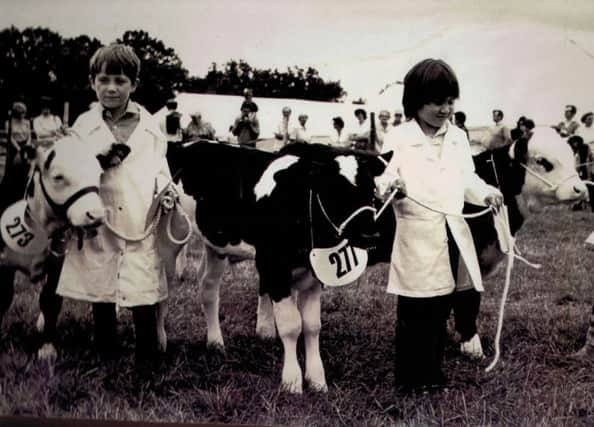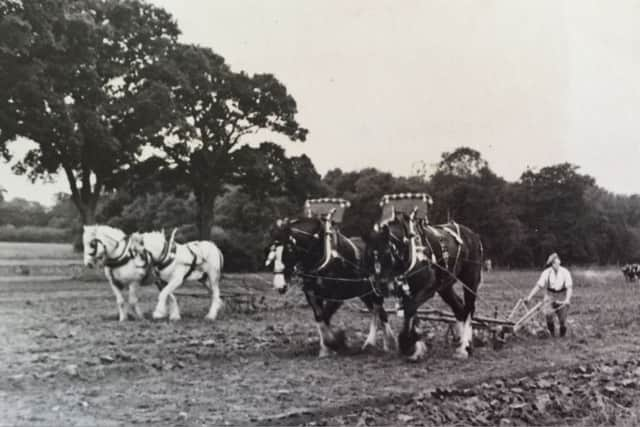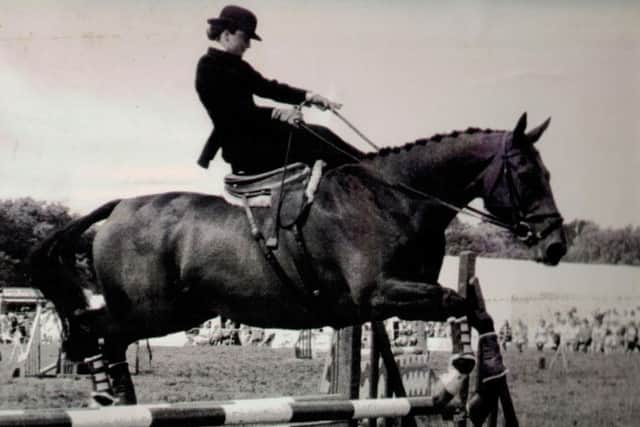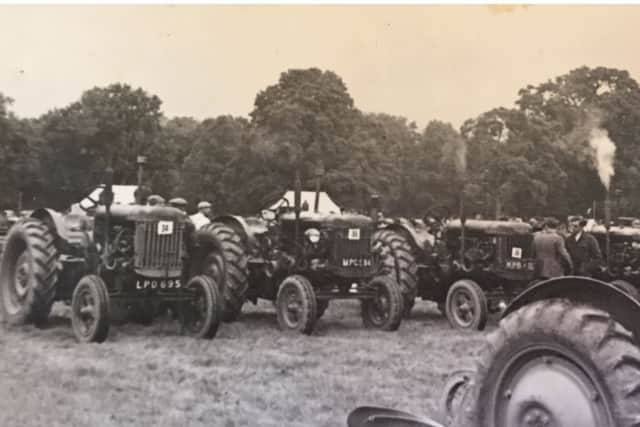Cranleigh Show marks 70th year
This article contains affiliate links. We may earn a small commission on items purchased through this article, but that does not affect our editorial judgement.


After the first ploughing match in 1946, the first combined show and ploughing match took place at Knowle Park on October 4 1947, and the event was ALL about farming – no motorcycle stuntmen in those days, not even riding horse classes.
There were huge numbers of dairy cattle – Jerseys, Ayrshires and Short Horn – no Friesians then, and competitions for rick building, thatching and root crops.
Advertisement
Hide AdAdvertisement
Hide AdDogs and a flower show were soon to make an appearance too.


All the trade stands, then known as side-shows, were farm related such as corn merchants, auctioneers, buildings, machinery and chemicals salesmen, and woodland crafts.
Classes were extended to pigs in 1948 and sheep in around 1954. Horse classes were added in 1956.
John Plumber, a retired dairy farmer from Forest Green, has only missed one show due to illness since 1947.
Advertisement
Hide AdAdvertisement
Hide AdBut two shows had to be cancelled due to an outbreak of foot and mouth disease in 1952 and flooding in 1974.


He said: “In the early days there were lots of pre-war tractors and lots of horse ploughing.
“And I remember as a boy seeing the first Massey Ferguson tractor which had hydraulic links heralding a new age of agricultural technology.
“There were many, many cattle – by the time I was actively involved in the show we had hundreds of entries.”
Advertisement
Hide AdAdvertisement
Hide AdShow records reveal a peak in 1957 when there were 515 cattle and a total of 1,435 entries of all kinds. In 1956, 190 of the cattle entries were Channel Island dairy cows.


John said: “We had enough interest in the agricultural classes not to need to expand into other areas.
“There were no entertainments as farming was strong enough and the centre piece of the show was the grand parade. There were so many cows it was amazing.
“The social impact of the show was important as farming is a very solitary occupation and the shows are one of the principal methods of socialising.
Advertisement
Hide AdAdvertisement
Hide Ad“In the 1940s agriculture in Surrey was only one step away from subsistence farming. There used to be 14-16 dairy farms just in Cranleigh. People would have 12 or 15 cows and sell the milk direct to their customers.
“Now farmers have to be businessmen to survive.”
One family stands out in the life of the show- the Elliotts of Whipley Manor Farm. They were tenant farmers at Painshill Farm from 1800 until 1920 when Daniel Elliott bought Whipley Manor.
Daniel was the first president of the Cranleigh and District Farming Club which founded the show, and his son David was an early chairman.
Grandson Adrian has done several stints as chairman of the Cranleigh and South Eastern Agricultural Society as it is now called, and this year it is the turn of his great grandson William!
Advertisement
Hide AdAdvertisement
Hide AdAdrian said: “My grandfather grew up with the wartime agriculture committees.
“At the end of the war rather than disband them the farmers were encouraged to keep them going and run shows and competitions. I didn’t get involved until the late 1960s. My father was chairman when they organised the purchase of Cranleigh Showground and he became president in the 1980s.
“In some ways it has changed over the years and in others it has kept its traditions.
“The original idea of the show was to show off your own animals for sale for breeding but the advent of artificial insemination and embryo transfer has speeded up the process of genetic improvement.
Advertisement
Hide AdAdvertisement
Hide Ad“But it means there is less of a business incentive to take your livestock round the showing circuit. People who still do it carry on because they enjoy the tradition and are still selling breeding stock.
“We run the show because we are trying to put something back into the community and show people what farmers are trying to do.”
The change from dairying to beef has been dramatic and this year, Cranleigh’s 70th anniversary, visitors will see a wonderful variety of beef breeds, as well as sheep, pigs, goats and horses. It is still a showcase for farming but you will see much more today.
Visit www.cranleighshow.co.uk for entry forms and tickets. Online bookings: Adult £11; Senior (60+) £7; Children 5-16 £1. Under 5s FREE; Day membership of Cranleigh and South East Agricultural Society, entitling you to use of the members marquee and facilities £20. Full price tickets will be available on the day - Adult £14; Senior £10; Child £1. Dogs are welcome on leads. Parking is free. Cranleigh Showground is at GU6 7DW.
Advertisement
Hide AdAdvertisement
Hide AdDon’t miss out on all the latest breaking news where you live.
Here are four ways you can be sure you’ll be among the first to know what’s going on.
1 Make our website your homepage at www.wscountytimes.co.uk
2 Like our Facebook page at www.facebook.com/wscountytimes
3 Follow us on Twitter @wscountytimes
4 Register with us by clicking on ‘sign in’ (top right corner). You can then receive our daily newsletter AND add your point of view to stories that you read here.
And do share with your family and friends – so they don’t miss out!
The County Times – always the first with your local news.
Be part of it.